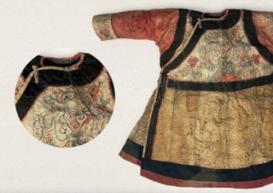This project addresses multiple issues related to contemporary sustainable fashion practices, with approaches inspired by Arctic fish skin heritage, such as transforming marine waste into leather, reducing pressure on over-produced materials, reducing consumption practices, reusing, and responsibly disposing of materials. Arctic resourcefulness is explored, drawing connections between fashion, anthropology, and indigenous knowledge. The findings demonstrate the ancient connections between fish, humans, and nature. Through this reconnection, we can encourage a less consumerist form of fashion.
For thousands of years, salmon have shaped the economic and cultural activity of Indigenous Arctic Peoples as a source of food and medicine, and playing a central role in ritual and ceremony. A balanced relationship was maintained in which fish, man, and environment were of equal importance. Highly specialized techniques were developed to transform the result of “exchanges” with salmon into strong, lightweight fish skin robes and shoes, providing clothing with the necessary insulation. Arctic women accumulated a vast knowledge of subsistence materials by constructing garments that could resist wear and tear both from the weather—rain, moisture, wind—and from the wearer—sweat, friction, and erosion. Passed down for generations, this climatic knowledge influenced every step of skin processing and garment sewing. A good seamstress had to master the skills of an artist, designer, biochemist, and climatologist. Human activities, such as the building of hydroelectric dams, and global climate change have created challenges that even resilient salmon struggle to adapt to. To reverse these effects, we must embrace ancient knowledge of practices which collaborate with the environment.

Late nineteenth-century child's coat made of fish skin. Hand-painted with floral motifs. Nanai, Siberia, Amur River. Philadelphia, USA. 2003-43-11
Project
(2023)
At the Edge of Land and Ocean: Arctic Indigenous Peoples and Fish Skin
- Elisa Palomino
- Cooperation Partners:
- Arts and Humanities Research Council (AHRC)
